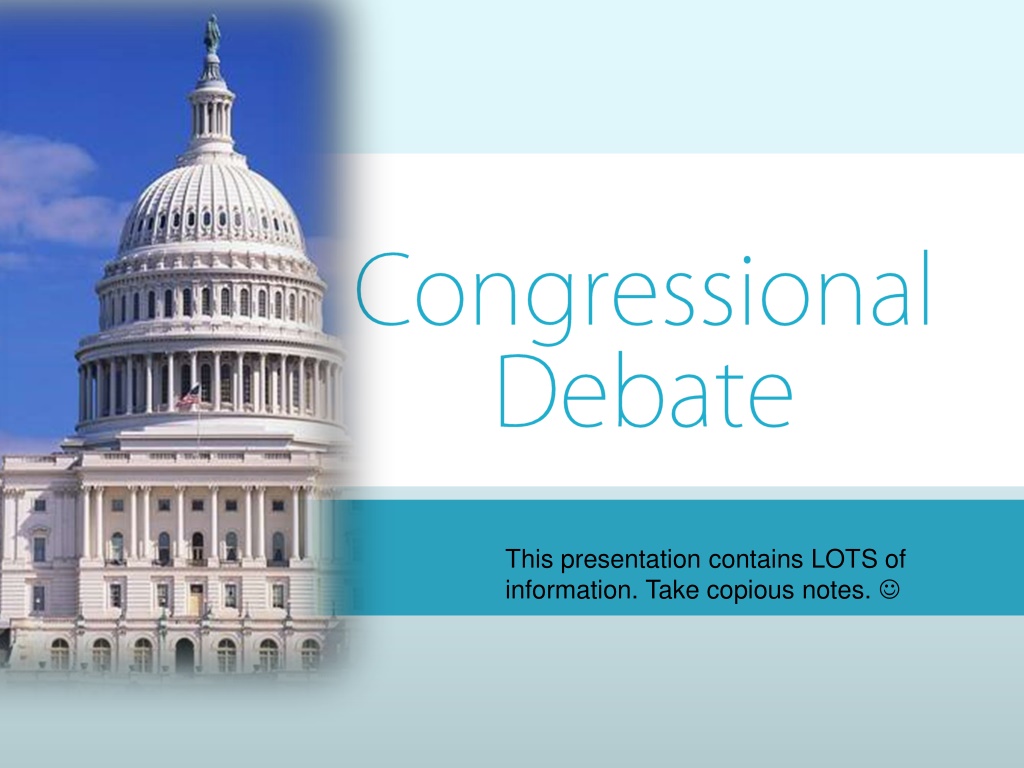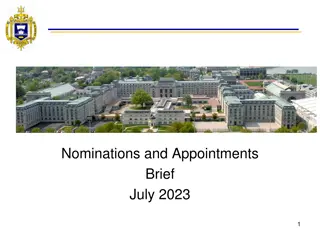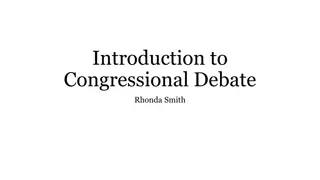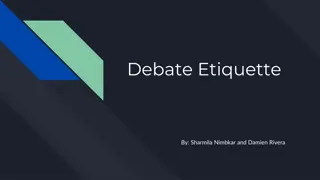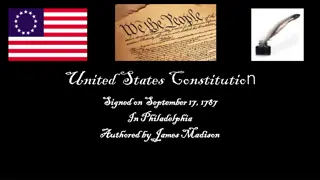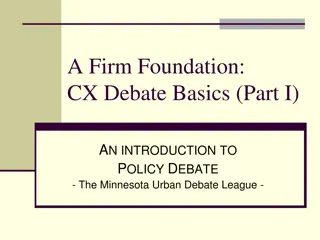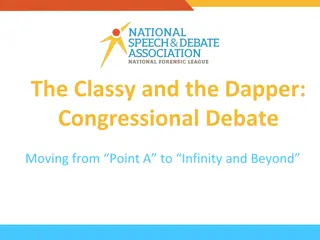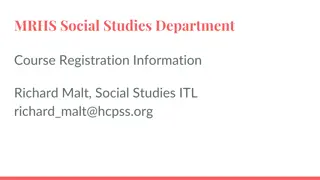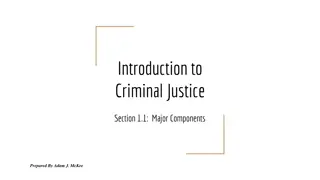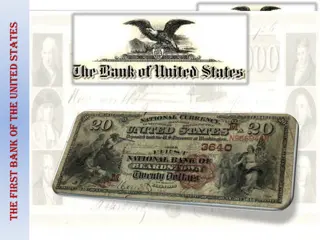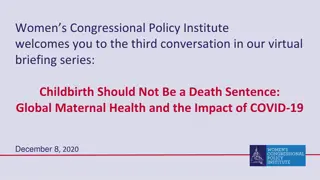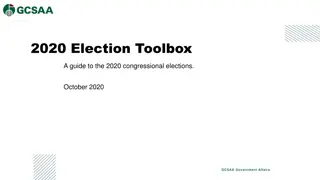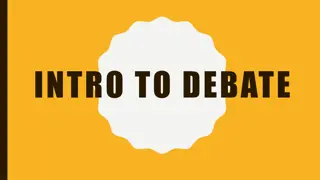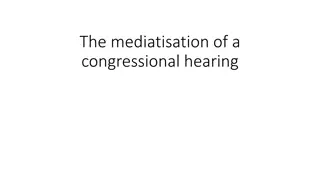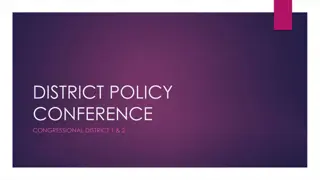Understanding Congressional Debate in the United States
This presentation delves into the nuances of Congressional Debate, a format modeled after the United States Congress where students debate proposed federal legislation. It covers key aspects such as types of legislation, vocabulary, roles like Senators/Representatives and Presiding Officer, parliamentary procedure, and sample legislation topics. Participants engage in structured debates, answering questions and presenting arguments while adhering to parliamentary rules.
Download Presentation

Please find below an Image/Link to download the presentation.
The content on the website is provided AS IS for your information and personal use only. It may not be sold, licensed, or shared on other websites without obtaining consent from the author. Download presentation by click this link. If you encounter any issues during the download, it is possible that the publisher has removed the file from their server.
E N D
Presentation Transcript
This presentation contains LOTS of information. Take copious notes.
Congressional debate is modeled after the United States congress. A chamber of 20-25 students debate the pros and cons of proposed federal legislation. Debaters must answer questions from their competitors after their argument. Judges score debaters on their presentation, clarity, logic and responses to questions.
In congress you have two types of legislation: Bills (Make into Law) Resolutions (Suggestions) Bills are on topics that are within the United States jurisdiction Resolutions are when the topic is not within the U.S. s jurisdiction. States rights Policies of other countries
Need to Know Vocabulary Senators/Representatives you! Motions Things you are allowed to do in the room after properly asking. Presiding Officer (PO) A student who is elected by the members in the room (chamber). The PO watches over the session and is replaced every session. Being a PO is equivalent to giving two speeches. Bills/Resolutions the legislation you want to enact or change. Docket/Agenda The order in which the Congressional Debate bills and resolutions are placed for debate.
Need to Know Vocabulary Affirmative (AFF) A speech that agrees with the legislation currently being debated. The introductory speech, also called an authorship or sponsorship speech, is also an affirmative presentation. Negative (NEG) A speech that disagrees with the legislation being presented. Parliamentary Procedure how the event is run.
Sample Legislation Topics About 10 days before the tournament (usually on a Wednesday), the league will make available full-text bills and resolutions written by students from the participating schools. They will be available for downloading from the league website, www.pbcfl.net. Here s a sample list of titles: DREYFOOS: A bill to abolish diplomatic immunity. ROYAL PALM: A bill to ban trade with China. ATLANTIC: A bill to legalize euthanasia. CARD NEW: A resolution to withdraw from the United Nations. JUPITER: A resolution to abandon economic sanctions as a foreign policy. WELLINGTON: A bill to establish a flat tax in place of the current federal income tax. JENSEN BCH: A bill to reform Social Security. KINGS: A bill to use chemical castration in all sex crimes. SUNCOAST: A resolution to improve the conditions in sweatshops. PB CENTRAL: A resolution to withdraw troops from Iraq.
Preparing Your Speeches Speeches should be legibly handwritten in an outline/notes format, not word-for-word. Outlines allow you to (a) have more eye contact with your audience and (b) help you not lose your place in the script. Each speech should focus on two major areas. Each of these points also known as claims, or contentions, or justifications need to be explained to the chamber by (1) clearly stating the issue, (2) addressing why it is important (3) proving your point by citing facts and statistics/data, (4) telling the chamber the positive impact of your point on the community, nation and/or world, and how it should affect their vote.
Preparing Your Speeches Additionally, present a challenge to the opposition. Force them to answer an issue, or state what the opposition must prove, in order to overwhelm your points or your perspective. YOU SHOULD CITE AT LEAST ONE CREDIBLE SOURCE FOR EVERY CONTENTION (PREFERABLY MULTIPLE). Leave room on the side margins for flowing (basically, taking notes) during speeches by other student legislators. This allows you to reference those previous speakers' points in your speech (this is known as clash ), something congress judges love to hear! You can use sticky notes to accomplish this by taking notes on them and placing them strategically on your speech outline.
Preparing Your Speeches Keep your notes/outline to one side of one page. Flipping pages can be tricky. If you need more than one side, use a second sheet, not the reverse side of the notes you were referring to in the first place. Don t use words you cannot pronounce or have no clue what they mean. Spell out difficult words phonetically. Know what you are talking about. If you refer to the NSA in your speech and don t know what the NSA is, you re setting yourself up for trouble especially if someone asks you what the NSA is during cross examination. (Incidentally, do you know what the NSA is?) Your speech should time out at around 2:30-2:40
Print out all legislation Do basic research on ALL topics. You should know the basics of the legislation. If you are unfamiliar with something referenced in the legislation read up on it. Pick a few pieces of legislation to do pro/con charts for. Make sure to get quotes, facts and statistics from relevant sources. The more topics you research, the more prepared you will be on competition day. Make sure you can give an authorship speech on the piece of legislation our school submits.
At Competition OPENING BUSINESS Students are assigned to chambers, labeled as a Senate or House (of Representatives), where they would be assigned the appropriate courtesy title (Senator or Representative). The first task a chamber assumes is to determine seating arrangement. At PBCFL tournaments, a seating chart with assigned placements will be created in advance. This facilitates easier identification by student presiding officers and judges.
Chamber Assignments On the Wednesday before two PBCFL tournaments (September and the Novice Championship in April), the league will email coaches that chamber assignments are set. This allows students to review which legislation will definitely be in their chambers. However, the order in which these items will be debated is not set in stone. The chambers will be listed via the Joy of Tournaments website (www.joyoftournaments.com). FOR ALL OTHER PBCFL TOURNAMENTS, THE CHAMBERS WILL NOT BE ANNOUNCED IN ADVANCE!
Setting the Agenda/Docket A congress begins by setting the agenda, using the docket of legislation, by nominating and voting on proposed agendas prepared in advance. At PBCFL tournaments, agendas are proposed and voted on by the chamber at the start of the opening session; however, for the PBCFL September Congressional, the novice house agenda will be pre-set by the league and cannot be amended, except to allow addition of Tier 2 legislation after all initial legislation has been exhausted.
Legislative Tiers WHAT IS A LEGISLATIVE TIER? On occasion, dockets will be set up in tiers for the chamber. This is because sometimes a chamber will debate all legislative items on their agenda before the end of the legislative day. Tier 1 legislation is the legislation from schools with representatives present in the chamber. Legislation that was not part of the initial docket, but was submitted for the tournament, is considered Tier 2 legislation.
Running the Chamber YOUR PRESIDING OFFICER THE CHAMBER S COORDINATOR After the agenda is set, election of the presiding officer by a single ballot (majority) takes place. At the PBCFL All-Congress (September), the novice house POs will be varsity debaters assigned by the league. After the PO calls upon a legislator to give a speech, the legislator thanks the PO, goes to the front of the room, and writes the following information on the board: last name, school code, and the sides/he will be speaking on (authorship, affirmative or negative).
Speaking Order Authorship/Sponsorship: this is the first constructive speech on each item of legislation. The speaker has a maximum of three minutes for the speech itself. Afterwards is a full, mandatory two minute questioning period by fellow legislators. Affirmative and Negative Speeches: The rules vary depending on whether it is a PBCFL, NSDA, or NCFL tournament.
Speaking Order PBCFL LOCAL & NSDA RULES: After the authorship speech for each item of legislation, alternating negative and affirmative speeches are given. The first negative speaker has three minutes to speak with a mandatory two-minute questioning period by fellow legislators. After that, each speaker is allowed a maximum of three minutes to speak, with a mandatory one minute questioning period. Members of the assembly may request suspending the rules to extend questioning. NCFL NATIONALS RULES: After the authorship speech for each item of legislation, alternating negative and affirmative speeches are given. Each of these speeches allows a maximum of three minutes to both speak and question. Whatever time is left over after the speaker concludes the speech is used for questioning by fellow legislators. If the speaker speaks for the full three minutes, no questions may be asked.
Time to Speak! Use elegant rhetoric and smooth transitions to present your ideas. Do not stand behind podiums or lecterns, as they separate you from your audience. Be passionate! Don t just talk about the topic, show you believe in your position and your points. Every speech after authorship should refute arguments of the opposing side and/or rebut (rebuild) arguments on the same side. This is known as clashing with previous speakers. NOTE: During speeches, you should be tracking their arguments by listening and taking notes (flowing). Refer to general themes/threads made in the arguments. After a debate gets one-sided, a speech of summarization is a welcome relief. Relate everything back to the big picture of the debate.
Time to Speak BEFORE GIVING A SPEECH: Clearly write your name, school code, and position (affirmative or negative) on the board. Preface your speech by introducing yourself to the judges, chamber and PO. WAIT for the OK from the PO! AT THE END OF YOUR SPEECH: State, For these reasons, I stand in (affirmation or negation) of this (bill or resolution). I now stand ready for cross examination.
CLASH CLASH YOUR BEST FRIEND IN A CONGRESS ROUND! It is very much encouraged to refer to previous speeches and speakers that s known as CLASH. You can do it in a variety of ways. For example ... As Senator Fetzko previously pointed out, BLAH BLAH BLAH. This proposal would lead to lower taxes, something both Representative Maravankin and I agree with. In fact While Senator DeStefano claimed earlier that Americans would favor this legislation, BLAH BLAH BLAH. Representative Padron earlier stated WHATEVER SHE SAID. However, this ignores evidence that BLAH BLAH BLAH. You can refer to a previous speech made on a different piece of legislation, as long as you can legitimately reference it.
Clash Here is what NOT to do: NEVER PERSONALLY ATTACK A PREVIOUS SPEAKER. You can attack his or her evidence, or the argument, but NEVER THE SPEAKER. If you disagree with something stated earlier, you can say something like While Senator Lucien brought up some very interesting arguments earlier about stem-cell research, the information he presented was not entirely accurate. (Then you go on to explain why your information is better!) Do NOT SAY: In his previous speech, Senator Gaba had no clue what he was talking about ... or Senator Gaba s speech was filled with nothing but lies and stupidity ... or Senator Gaba not only gave an awful speech perhaps the worst I have ever heard in my life but he needs a better haircut...
Body Language The triangle should be utilized if you feel comfortable. For the triangle, visualize you begin your speech at Ground Zero. When you are bridging to your first point, you ll take two or three natural steps diagonally forward to your right. When segueing into your second point, you ll take several natural steps to your left. As you begin your third point, take several more natural steps to your left. And as you begin your conclusion, you should take several natural steps to your right, ending your speech at roughly the same place you began center, a few steps in front of where you started. If you are not comfortable doing the triangle, standing in one place is acceptable. Shifting weight and fidgeting is not acceptable. Try to look at your audience, even if you are using notes for your speech.
Body Language-DONTS Pacing is bad. You re not Jesse Jackson, and this isn t a theatrical performance. Don t walk back and forth in front of your audience while speaking. Judges will write this on your ballot. You don t want this on your ballot! Swaying back and forth is also bad. Some refer to this the Dramamine Effect, because swaying makes them seasick. Judges will write this on your ballot. You don t want this on your ballot! Don t use exaggerated or unnatural hand gestures. Don t put your hands in your pockets. Or in any one else s pockets, either! Don t hide behind your folio or clipboard. Don t face the ground when speaking. The floor is not your audience. Don t read off your notes word-for-word. Eye contact is always a good thing.
Speech Scores Maximum Time: 3:00 minutes SCORE 6 (highest score) The speech is between 2:15 and 3:00 in length. The speaker shows evidence of research and/or clash with previous speakers on the topic. The speech is well organized and points are clearly made. Delivery is smooth and convincing. Eye contact is nearly continuous. The speaker conveys conviction for his/her position and is persuasive in his/her reasoning. It is apparent that the student understands the argument completely and has put thought into the preparation of the speech.
Speech Scores Maximum Time: 3:00 minutes SCORE 5 The speech is between 2:00 and 3:00 in length. The speaker shows evidence of research and/or clash with previous speakers on the topic. Organization of the speech is clear. The speaker attempts a fair level of eye contact and works to convey conviction for his/her position. Delivery may show some nervousness, but it is apparent that the speaker has put thought into the preparation of the speech.
Speech Scores Maximum Time: 3:00 minutes SCORE 4 The speech is brief between 1:30 and 2:00 in length. The speaker shows evidence of research and/or clashes with previous speakers on the topic. The speaker maintains a good amount of eye contact and delivery is fairly free of distractions. Preparation is apparent.
Speech Scores Maximum Time: 3:00 minutes SCORE 3 The speech is brief between 1:30 and 2:00 in length. The speaker shows some evidence of research and/or clash with previous speakers on the topic. The speaker makes some eye contact. Delivery may be nervous, but preparation is apparent.
Speech Scores Maximum Time: 3:00 minutes SCORE 2 Speech is brief between 1:00 and 1:30 in length. The speaker shows no evidence of research and/or clash with previous speakers on the topic. The speaker makes little eye contact and conveys little conviction for his/her position. SCORE 1 Speech is very brief between 1:00 and 1:30 in length. Speaker shows no evidence of research and/or does not clash with previous speakers on the topic. The speaker does not make any eye contact and does not convey conviction for his/her position.
Speech Scores Maximum Time: 3:00 minutes SCORE 0 Speech is under 1:00 and/or speaker claims he/she is giving the speech for a grade in class. A ZERO MEANS THE SPEECH NEVER HAPPENED!
Parliamentary Procedures and Motions In Congressional Debate, if you want to do anything, from changing the topic of debate to going to the restroom, you have to stand up at a specific break in the action and say a certain motion; basically, you are asking the PO for permission to do something. Here are the most widely-used motions and what they mean in simplest terms: Set The Docket Before you get started, the chamber must vote on an order in which to debate the various legislative items. Once set, it is considered a part of the day s standing rules. Open The Floor For PO Nominations First motion ever said in Congress (done before the first session of the day begins). It starts the voting process for the PO. Open The Floor For Debate Starts the event. A debate way of saying LET S GET THIS PARTY STARTED!
Motions Point Of Inquiry Do you want to ask the PO a question for clarification on a topic, procedure, issue, etc.? Use this motion to do so. Point Of Personal Privilege/Exit Chambers If you need to exit the room for any reason at all for example, to use the restroom simply say this motion along with exit chambers -AFTER the PO asks you to state your privilege. Call The Previous Question Tired of arguing the same topic over and over again? Say this motion to begin the voting process on the legislation being discussed, so you can move on to the next topic. However, you need a 2/3 vote to successfully complete this motion. Move To Table (The Bill Or Resolution) Use this motion to basically set the legislation aside so we can deal with it later. NOTE: AT THIS TIME, TABLING MOTIONS IS NOT ALLOWED AT PBCFL CONGRESSIONAL DEBATE TOURNAMENTS
Motions What you want to do What you say Vote needed Effect Begin debate I move that we open the floor for debate. Majority Officially begin Stop debating a piece of legislation I move to previous question. 2/3 Calls for an immediate vote on the legislation Personal Liberties Point of personal privilege (to exit chambers). Decision of the PO Gets permission to leave chambers for a quick restroom break *Debate the legislation later I move to table the legislation. Majority Puts legislation on hold; must be readdressed before the end of the legislative day. *NOT ALLOWED IN PBCFL RULES
Orders of the Day Call For Orders Of The Day This motion, like opening the floor for debate in the morning, is a debate way of saying GOODBYE! NICE COMPETING WITH YOU! This motion closes the floor for debate and is called at the end of the last session of the congressional day. It also includes student voting for the best PO award.
Order/Flow of the Day Morning Session (2 hours) Within this time frame a few things will happen. The docket/agenda will be agreed upon, a PO will be chosen for the first session, and of course speeches will be given. Authorship Speech (five minutes: three for the speech, two for cross-ex) The authorship speech is the first speech given on any item. It is given by a student representing the school that wrote it, and basically tells everyone what s going on. A mandatory two minute cross-examination period will follow the speech for any questions legislators might have on the legislation
Order/Flow of the Day First Negative Speech (five minutes: three for the speech, two for cross-ex) This is the second speech on any piece of legislation, and is given in opposition to the item being debated. A mandatory two- minute cross-examination period follows the speech. All Other Affirmative & Negative Speeches Student speaks positively about, or in opposition to, the legislation. A mandatory one-minute cross-examination period follows each speech. Lunch You leave the chamber after the 2 hour session, go to the cafeteria and eat! (Hopefully you got your lunch ticket from your coach in the morning; if not, do so now!) You return to the chamber for the afternoon session at the designated time on the tournament schedule
Order/Flow of the Day Afternoon session (2 hours) The second session is essentially the first session, except at the end someone will call for Orders of the Day to close the floor for debate. But everything is done the same way as in the first session in terms of speeches and speech order. The docket does NOT reset after lunch, nor does recency (the speaker order) reset.
Who wins? There are many methods of determining who earns a trophy or gavel as the Best Legislator/Speaker, or Best Presiding Officer. The most common method (which is used in the PBCFL) is where all judges (two in the morning session, two more in the afternoon session) rank/nominate students as best legislators. In the PBCFL, the Chamber s Choice Presiding Officer is decided by the judges PO scores; however, students vote after both sessions have been completed, through a written (secret) ballot. This is used as a tiebreaker.
What You Need to Bring Table of parliamentary motions Legislative packet Folio (professional no stickers or labels) or legal pad (with a strong cardboard back) Ink pens (black/blue and red) no pencils! All of your research (on every item) Sticky notes Gavel (VARSITY-if planning on presiding over a chamber)
Speak clearly Look at the chamber and make eye contact. Try not to fix on one point or stare down the judges. Include LOTS of facts. You need to be able to show the judges that you have researched your argument and that it is valid. Refer to previous congress people. Directly refute their argument. Always be respectful and focus on the argument, not the person. Bring up new points. Don t just repeat what other people have said.
IMPORTANT NOTES: There is no such thing as prefacing a question or a two-part question in cross examination NSDA rules allow for an open chamber (which means legislators may freely come and go without asking for personal privilege); PBCFL rules allow no such option. NSDA rules allow for recess during a session; PBCFL rules allow no such option. You are role playing a federal legislator. You are not a high school student. THIS IS IMPORTANT! A debate cycle should end after an affirmative speech.
The Rest Recency does not reset after lunch Longest Standing and Activity in the Chamber are faulty speaker recognition systems and should not be used to determine recency. GAVELING PROCEDURES: 1 tap = 2:00; 2 taps = 2:30; 3 taps = 2:55 Never argue against your school s legislation! Always remain professional. If you are disrespectful, many judges will make note of that on your ballot and your coach WILL find out. Remember your school code. The judges will need it for your ballot.
Reliable Sources Al Jazeera - http://www.aljazeera.com/ The American Prospect - http://prospect.org/ American Institute for Economic Research - http://www.aier.org/ Asahi Shimbun - http://www.asahi.com/ (must translate to English) American Interest - http://www.the-american- interest.com/ Asia Times Online - http://www.atimes.com/ Atlanta Journal Constitution - http://www.ajc.com/ American Political Science Journal - http://www.apsanet.org/con tent_3222.cfm The Atlantic - http://www.theatlantic.com/
Reliable Sources BBC - http://www.bbc.co.uk/ Business Week - http://www.businessweek.com/ Bild - http://www.bild.de/ (must translate to English) Carnegie Endowment for International Peace - http://carnegieendowment.org/ Boston Globe - http://bostonglobe.com/ CATO Institute - http://www.cato.org/ Brookings Institute - http://www.brookings.edu/ Center for American Progress - http://www.americanprogress.org Brown Journal of World Affairs - http://www.bjwa.org/ Center for Economic and Policy Research - http://www.cepr.net/ Business Day - http://www.businessday.co.za/
Reliable Sources Center for European Policy Studies - http://www.ceps.be/ American Enterprise Institute - http://www.aei.org/ Center for Social and Economic Research - http://www.case- research.eu/ Congressional Research Service - http://www.loc.gov/crsinfo/ Council on Foreign Relations - http://www.cfr.org/ Center for Strategic and Budgetary Assessments - http://www.csbaonline.org/ Current History - http://www.currenthistory.com/ Center for Strategic and International Studies - http://csis.org/ Daily Mail - http://www.dailymail.co.uk/ushome/in dex.html Center on Budget and Policy Priorities - http://www.cbpp.org/ Economist - http://www.economist.com/
